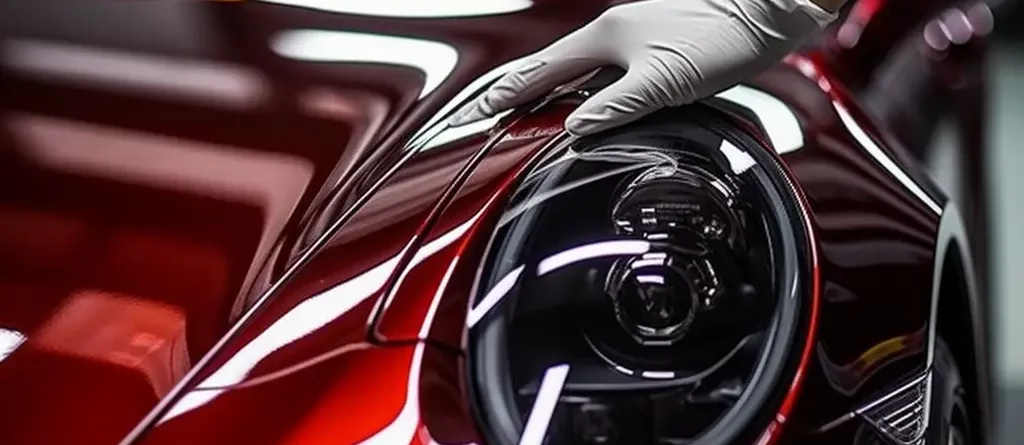Advanced Shine Technology at Conforti Auto and Marine Detailing Ceramic Coating
Advanced Shine Technology at Conforti Auto and Marine Detailing Ceramic Coating
Blog Article
How Detailing Porcelain Finishing Boosts the Durability of Your Cars and truck's Paint
Ceramic layer has emerged as an essential innovation in automotive detailing, providing a long-lasting service for maintaining the stability of your cars and truck's paint. Recognizing the ins and outs of exactly how ceramic finishing works and its benefits over typical wax can provide useful understandings for vehicle proprietors.
What Is Ceramic Covering?
Comprehending the safety advantages of ceramic finish starts with recognizing its structure and performance. Ceramic finishing is a liquid polymer related to the exterior surfaces of automobiles, mostly developed to enhance and secure vehicle paint. The essential element of this layer is silicon dioxide (SiO2), which is stemmed from natural materials like sand. This compound develops a strong chemical bond with the manufacturing facility paint, producing a protective layer that is both resilient and hydrophobic.
The covering's application includes precise prep work of the automobile's surface, which have to be complimentary from contaminants, scratches, and blemishes to make certain optimal bond. When used, the ceramic coating treatments to form a rigid guard that can stand up to numerous ecological factors, including UV rays, chemical discolorations, and oxidation.
Furthermore, ceramic finishes are not simply surface-level treatments; they permeate the paint to supply a long lasting protection. This performance prolongs the life-span of the car's aesthetics while preserving its worth with time. Understanding these fundamental facets of ceramic covering is necessary for auto proprietors looking for efficient services for paint preservation and enhancement.
Benefits of Ceramic Layer
The benefits of ceramic finish extend much past its standard safety functions. Unlike traditional wax or sealants, ceramic coverings develop a solid bond with the cars and truck's paint, enabling it to hold up against ecological risks such as UV rays, acid rainfall, and road salt.
In addition, ceramic coverings provide hydrophobic residential or commercial properties, implying they drive away water and impurities. This characteristic not just makes the car easier to tidy however additionally reduces the regularity of cleaning, conserving both effort and time for automobile proprietors. The slick surface area created by the coating avoids dirt and grime from adhering, enhancing the auto's overall tidiness.
Additionally, ceramic coatings improve the depth and clearness of the paint, giving automobiles a glossy coating that is visually striking. This aesthetic improvement additionally adds to preserving the automobile's resale value, as a well-maintained exterior is a major selling factor for possible customers. Generally, the benefits of ceramic coating make it a rewarding financial investment for any individual wanting to shield and improve their lorry's paintwork.
Just How Ceramic Finish Works

The coating's hydrophobic properties drive away water and dirt, avoiding the build-up of grime on the surface area. This not just makes the auto less complicated to tidy however likewise decreases the likelihood of scratches and swirl marks brought on by typical cleaning approaches. The ceramic layer acts as a shield against UV rays, which can cause fading and oxidation over time.
When treated, the covering shows amazing resistance to chemicals, including road salts, bird droppings, and tree sap, which can or else harm the paint. The durability of ceramic finishes can last for numerous years, relying on aspects such as maintenance and environmental conditions. On the whole, the chemical bonding process of ceramic layers supplies a durable protection that maintains the integrity and appearance of a car's paintwork.
Comparing Ceramic Coating to Wax
Contrasting ceramic layer to conventional wax exposes considerable distinctions in performance and long life. While both products aim to secure an automobile's paint, their make-ups and sturdiness established them apart. Wax, generally made from all-natural carnauba or artificial products, offers a short-term guard that normally lasts just a couple of weeks to a couple of months, depending on environmental conditions and upkeep regimens.
On the other hand, ceramic coatings are advanced options composed of inorganic products that bond chemically with the automobile's paint. This creates a durable, semi-permanent layer of security that can endure for several years. As a result, ceramic layers provide superior resistance to UV rays, chemical discolorations, and physical abrasion, dramatically minimizing the risk of oxidation and fading.
Moreover, the hydrophobic residential properties of ceramic finishings make certain that water beads up and rolls off the surface, making it harder for dust and crud to stick. This convenience of cleaning is a remarkable benefit over wax, which can attract dirt and require constant reapplication. Ultimately, for cars and truck proprietors looking for durable defense and improved visual allure, ceramic finishes offer a more efficient choice to traditional wax products.
Maintenance Tips for Longevity
Correct upkeep is necessary for making best use of the longevity of a ceramic coating. Routine cleansing is the foundation of reliable upkeep. Make use of a pH-balanced vehicle shampoo to prevent degrading the finish, and prevent automated auto washes with extreme brushes that can trigger micro-scratches. Rather, go with a touchless automobile clean or hand wash.
To maintain the hydrophobic residential properties of the ceramic finishing, take into consideration applying an upkeep spray or next page booster particularly developed for ceramic coverings every couple of months. This will certainly enhance the protective layer and improve water beading.
Additionally, stay clear of exposing the covered surface area to extreme environmental problems whenever feasible. Auto parking in shaded locations or making use of a cars and truck cover can protect against UV damage and contamination from bird droppings, tree sap, or commercial fallout.
Finally, evaluate the finishing periodically for indicators of wear or damage. If you notice a decrease in hydrophobic habits, it may be time for a specialist reapplication. By adhering to these maintenance suggestions, automobile proprietors can dramatically expand the life and efficiency of their ceramic finishing, making sure that their vehicle's paint stays protected see here and aesthetically appealing for years to come.
Verdict

Report this page